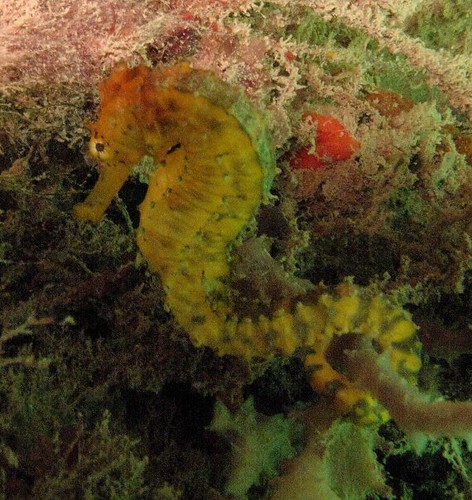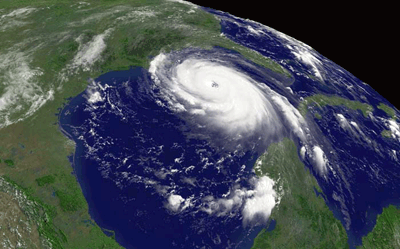 August 31, 2009
August 31, 2009

Juvenile Honey-head damsel
I’d expected the water visibility to be poor since it’d been raining the entire week but surprisingly, visibility on the reef was comfortable at about 1.5-2m. The visibility improved during the 2nd dive when rain clouds cleared and some sunlight finally joined us for our dive!
Read the rest of this entry »
 Posted in Blog Log
Posted in Blog Log  No Comments »
No Comments »
 August 21, 2009
August 21, 2009
 Combined land and ocean surface temperatures for the world are fifth warmest on record
Combined land and ocean surface temperatures for the world are fifth warmest on record
The ocean surface temperature was the warmest on record for July, according to the National Oceanic and Atmospheric Administration (NOAA) in the US.
Incidentally, on 28 June 2009, the Hantu Blog recorded an underwater temperature of 31 degrees C, up from an average of 27.5 degrees C measured over the past 5 years.
Global ocean surface temperatures reached 17 degrees C in July 2009, just over 1 degree C higher than the 20th century average of 16.4 degrees C.
Land surface temperatures across the world were tied with 2003 as the ninth-warmest July on record, just under 1 degree F above the 20th century average of 57.8 degrees F (14.3 degree C).
Read the rest of this entry »
 Posted in Climate Change, News
Posted in Climate Change, News  No Comments »
No Comments »
 August 11, 2009
August 11, 2009

New information on the biology of albacore tuna will assist in stock assessments and providing advice on harvest levels in Australian and international waters. PHOTO: CSIRO/FRDC
Scientists are set to study the earbones and organs of more than 2000 albacore tuna to better understand the growth, age and breeding patterns of this increasingly important species.
Albacore tuna are harvested from tropical to temperate waters, mainly for canning, but also to satisfy the growing market for fresh fish in Europe and the United States.
While previously caught as by-product, albacore have become a prime target of Australia’s Eastern Tuna and Billfish Fishery which operates from Cape York to Tasmania and on the adjacent high seas. Several Pacific island nations and distant water fleets, including Taiwan and Korea, also target albacore.
Read the rest of this entry »
 Posted in Biology, Fisheries, News
Posted in Biology, Fisheries, News  No Comments »
No Comments »
 August 2, 2009
August 2, 2009

Tigertail seahorse PHOTO: Cindy Tan
It’s real handy to have so many photographers out on a trip. The better it enables us to share with you and non-divers, the splendours that exist beneath the surface of Singapore’s waters. Regular Hantu Blog diver (and soon to be volunteer) Cindy Tan, is a real good spot when it comes to tiny things. She’s a real patient photographer and she loves sea horses and nudibranchs, or anything that’s hard to find.
Read the rest of this entry »
 Posted in Blog Log
Posted in Blog Log  3 Comments »
3 Comments »
 July 28, 2009
July 28, 2009

Member countries of the East ASEAN Growth Area (EAGA) are deliberating on a draft framework designed to ensure sustainable management of tuna spawning grounds in the Coral Triangle. PHOTO: Debby Ng
A statement yesterday of the Mindanao Economic Development Council (MEDCo) said that the sub-ASEAN grouping, composed of Brunei Darussalam, Indonesia, Malaysia and the Philippines, is now finalizing the draft memorandum of agreement (MoA) crafted by the Philippine EAGA Working Group on Fisheries with the help of the German Technical Cooperation.
Among others, the proposed framework will form a forum that will facilitate discussion of issues on fisheries development as well as opportunities such as access to market, funding and technology; capacity-building of fishermen, and public-private partnerships.
Source
 Posted in News
Posted in News  No Comments »
No Comments »
 July 28, 2009
July 28, 2009

El Niño events affect global weather conditions, changing rainfall patterns and storm intensity. PHOTO: NOAA
NOAA scientists announced the arrival of El Niño, a climate phenomenon with a significant influence on global weather, ocean conditions and marine fisheries.
El Niño, the periodic warming of central and eastern tropical Pacific waters, occurs on average every two to five years and typically lasts about 12 months.
NOAA expects this El Niño to continue developing during the next several months, with further strengthening possible. The event is expected to last through winter 2009-10.
“Advanced climate science allows us to alert industries, governments and emergency managers about the weather conditions El Niño may bring so these can be factored into decision-making and ultimately protect life, property and the economy,” said Jane Lubchenco, Ph.D., under secretary of commerce for oceans and atmosphere and NOAA administrator.
El Niño’s impacts depend on a variety of factors, such as intensity and extent of ocean warming, and the time of year. Contrary to popular belief, not all effects are negative. On the positive side, El Niño can help to suppress Atlantic hurricane activity. In the United States, it typically brings beneficial winter precipitation to the arid Southwest, less wintry weather across the North, and a reduced risk of Florida wildfires.
Read the rest of this entry »
 Posted in News
Posted in News  1 Comment »
1 Comment »
 July 27, 2009
July 27, 2009

Sea slugs on the reef - Egretta nudibranch PHOTO: Jimmy Goh
Divers at Pulau Hantu enjoyed exceptional visibility today. Volunteer dive instructor Peimin said it’s the best it’s been since April! Sure am bummed I missed it once again. So here I am blogging vicariously (again) but feeling none less thrilled about what was spotted today on Hantu’s reefs! From shellfish to slugs, pipefish to seahorses and all critters in between. We’ve got an unusual perspective of the reef this weekend thanks to some extraordinary photography!
Read the rest of this entry »
 Posted in Biology, Blog Log, Volunteers
Posted in Biology, Blog Log, Volunteers  2 Comments »
2 Comments »
 July 24, 2009
July 24, 2009

Hippocampus kuda PHOTO: Paul Cheng
Look what NParks officers spotted at Changi Intertidal this morning! Also known as the Estuarine seahorse, Hippocampus kuda is found mainly in seagrass areas near sources of freshwater. It is found all around Singapore in shallow waters.
Unlike other seahorses in our waters, its body is without large, obvious spines. Colours seen include yellow, brown, sometimes pinkish or even orangey. Some have spots on the body. Often seen in a pair near one another: One is bright yellow, the other is dark; brown or even black. Sometimes, very tiny ones only about 2cm long are seen among seaweeds. WildFactsheets
 Posted in Uncategorized
Posted in Uncategorized  No Comments »
No Comments »
 July 9, 2009
July 9, 2009

While Australia remains committed to playing an ongoing role in assisting the six nations of the Coral Triangle Initiative (CTI) to protect their marine environments, a leading scientist here says that an Australian-style of management in the triangle will not work.
”There is no single recipe for how to manage a reef well and the Great Barrier Reef model is not exportable to a poor country,” says Professor Terry Hughes, director of the highly-regarded Australian Research Council’s Centre of Excellence for Coral Reef Studies. The centre is a partnership of several leading universities and statutory bodies – located at James Cook University in Townsville.
Read the rest of this entry »
 Posted in Uncategorized
Posted in Uncategorized  No Comments »
No Comments »
 July 1, 2009
July 1, 2009

Over the weekend, Hantu Blog divers were disappointed but curious at the baby blacktip reef shark that was fished out of the waters along Pulau Hantu’s reefs by a local recreational fisherman.
Read the rest of this entry »
 Posted in Blog Log
Posted in Blog Log  No Comments »
No Comments »
 August 31, 2009
August 31, 2009 
 Posted in
Posted in 
 Combined land and ocean surface temperatures for the world are fifth warmest on record
Combined land and ocean surface temperatures for the world are fifth warmest on record











 content rss
content rss
COMMENTS